The Prado Museum in Madrid is officially known as the “Museo Nacional del Prado” and is the national museum of Spain and the most popular museum in the country.
It’s located right in the heart of the Spanish capital just west of the large El Retiro Park and pretty much at walking distance of the Plaza Mayor and the Royal Palace of Madrid.
Established in 1819 to display the Spanish Royal Collection to the public, it has grown into one of the most popular museums in the world and is visited by millions of people every year.
It houses an incredible collection of fine art dating from the 12th to the 20th centuries. Its collection size totals over 8,200 drawings, 7,600 paintings, 4,800 prints, and 1,000 sculptures.
In this article, you’ll discover some of the most famous paintings at the Prado Museum, artworks that you can’t miss when you plan to take a visit.
1. Las Meninas – Diego Velázquez
- Date created: 1656
- Dimensions: 318 × 276 centimeters (125.2 × 108.7 inches)
Las Meninas is the most famous painting in Spanish history, not surprisingly painted by one of the most famous Spanish artists to have ever lived. It was painted during the final years of Diego Velázquez’ (1599-1660) life and still captivates visitors of the Prado Museum until today.
The intriguing work of art by Velázquez allows us to get a view of a scene taking place at the Royal Alcazar of Madrid where the Baroque artist worked. We can see the royal family and members of the household, the artist himself, and the reflection of the king and queen in the mirror as he paints their portrait. It’s a world treasure and an incredibly important painting in the history of Western art.
2. The Adoration of the Shepherds – El Greco
- Date created: 1612-1614
- Dimensions: 319 × 180 centimeters (126 × 71 inches)
The Adoration of the Shepherds is a remarkable painting in the oeuvre of El Greco. He created it with the intention for it to hang over his tomb at the monastery of Santo Domingo el Antiguo in Toledo, the city he lived and worked in during the final decades of his life.
The Mannerist artist, who was of Greek origin and whose real name was Domḗnikos Theotokópoulos (1531-1614) died shortly after he completed this remarkable work of art which can be considered one of his ultimate masterpieces in his distinctive style.
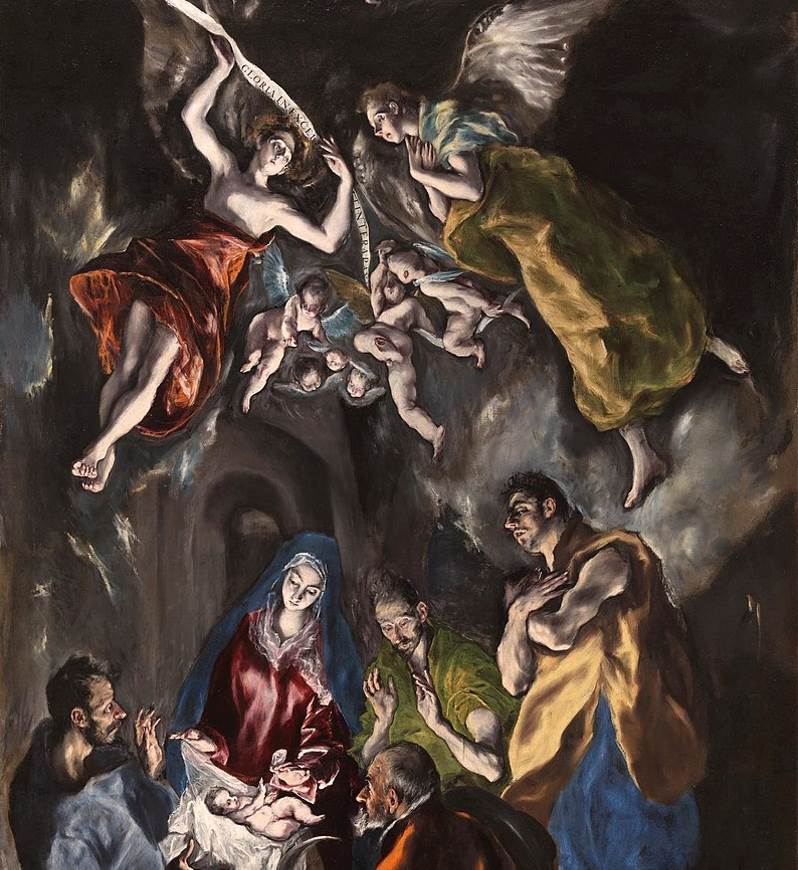
3. Equestrian Portrait of Charles V – Titian
- Date created: 1548
- Dimensions: 335 × 283 centimeters (132 × 111 inches)
The Equestrian Portrait of Charles V was commissioned by the Holy Roman Emperor to commemorate his victory in the Battle of Mühlberg in April 1547. It was painted when Tiziano Vecelli (1490-1576) worked for him at his court in the German city of Augsburg.
The huge painting is remarkable because it depicts the Holy Roman Emperor ad he appeared during the battle. To make it even better, you can admire the harness and armor worn by Charles V at the Royal Armoury of the Royal Palace of Madrid as both have been preserved.
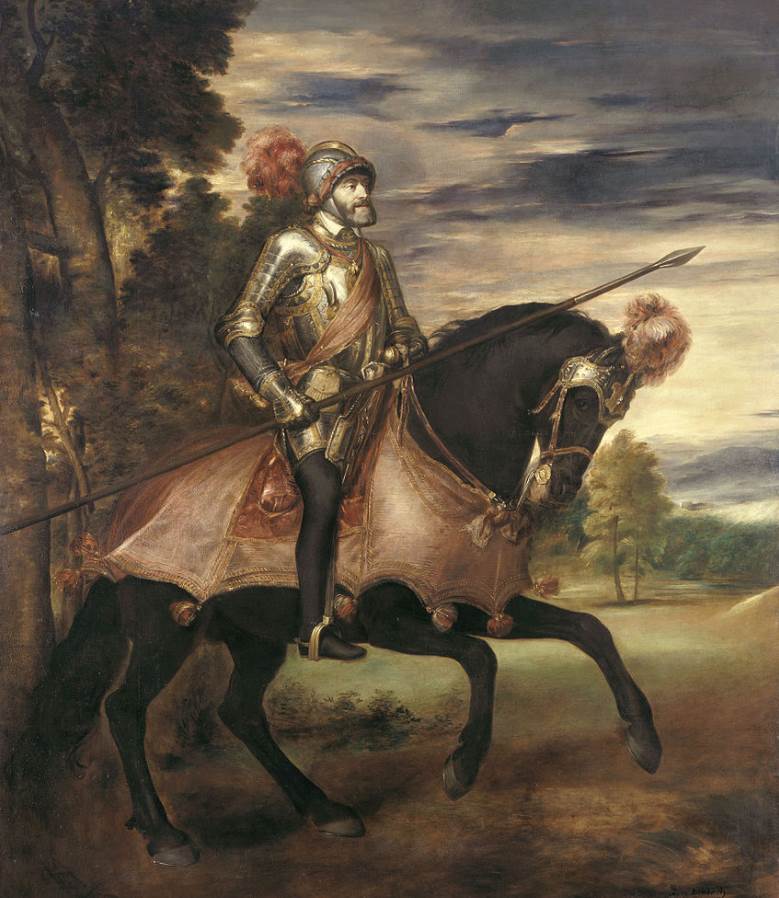
4. The Garden of Earthly Delights – Hieronymus Bosch
- Date created: 1490-1510
- Dimensions: 205.5 × 384.9 centimeters (81 × 152 inches)
The Garden of Earthly Delights is one of the most famous paintings in the oeuvre of the mysterious Early Netherlandish painter Hieronymus Bosch (1450-1516). Little is known about the man’s life except that he spent most of his time in the city of s-Hertogenbosch.
His paintings often feature peculiar illustrations and this masterpiece is no different. This triptych painting represents the Garden of Eden, Life on Earth, and the Last Judgement respectively, and was most probably a private commission due to the explicit content in the central panel.

5. Saturn Devouring His Son – Francisco Goya
- Date created: 1819-1823
- Dimensions: 143 × 81 centimeters (56 × 32 inches)
Saturn Devouring His Son is one of the fourteen dark and peculiar paintings in the oeuvre of Francisco Goya (1746-1828), the leading Romantic artist in Spain during the late 18th and early 19th centuries.
As the name of this Goya painting suggests, it depicts a Greek myth in which Saturn eats one of his newly born sons because he fears being overthrown by him. The painting originally decorated a wall of Goya’s house before being transferred to a canvas which allowed it to become one of the famous paintings at the Prado Museum.

6. The Three Graces – Peter Paul Rubens
- Date created: 1630-1635
- Dimensions: 221 × 181 cm (87 in × 71 in)
The Three Graces is a remarkable painting by Rubens because it was painted for the artist’s collection. It was completed shortly after he married his second wife, Helena Fourment, who stood model for this work as well.
Although it was painted to commemorate The newly found love of Peter Paul Rubens (1577-1640) after the death of his first wife, it was acquired by the King Philip IV of Spain in the year 1666 to decorate the Royal Alcazar of Madrid. This is how it eventually made its way to the Prado Museum.
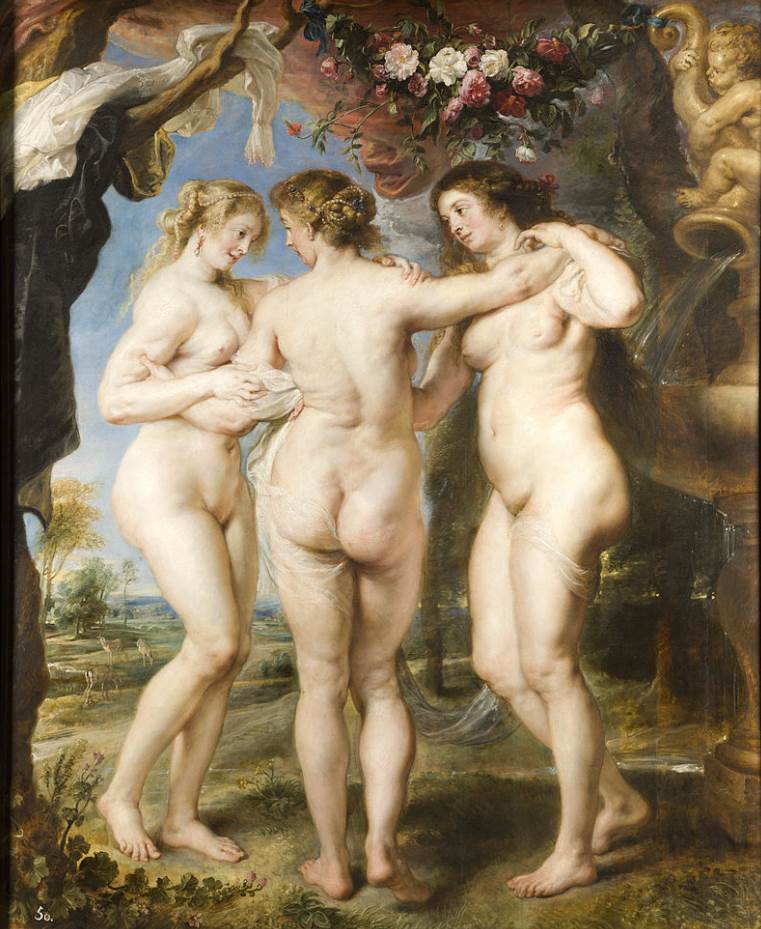
7. The Triumph of Bacchus – Diego Velázquez
- Date created: 1628-1629
- Dimensions: 165 × 225 centimeters (65 × 89 inches)
The Triumph of Bacchus is a painting also known as “Los Borrachos,” a reference to the common men enjoying the wine offered to them by Bacchus, the ancient god of wine. The realistic depiction of the subjects is a distinctive trademark of the artist, something he already employed during his early period in Seville.
This painting was produced during his early phase in Madrid, shortly after he became the permanent court painter of King Philip IV. The Spanish monarch was also the man who commissioned this work, shortly before he allowed Velázquez to travel to Italy to study the works (and buy a couple) of the most renowned Italian artists.
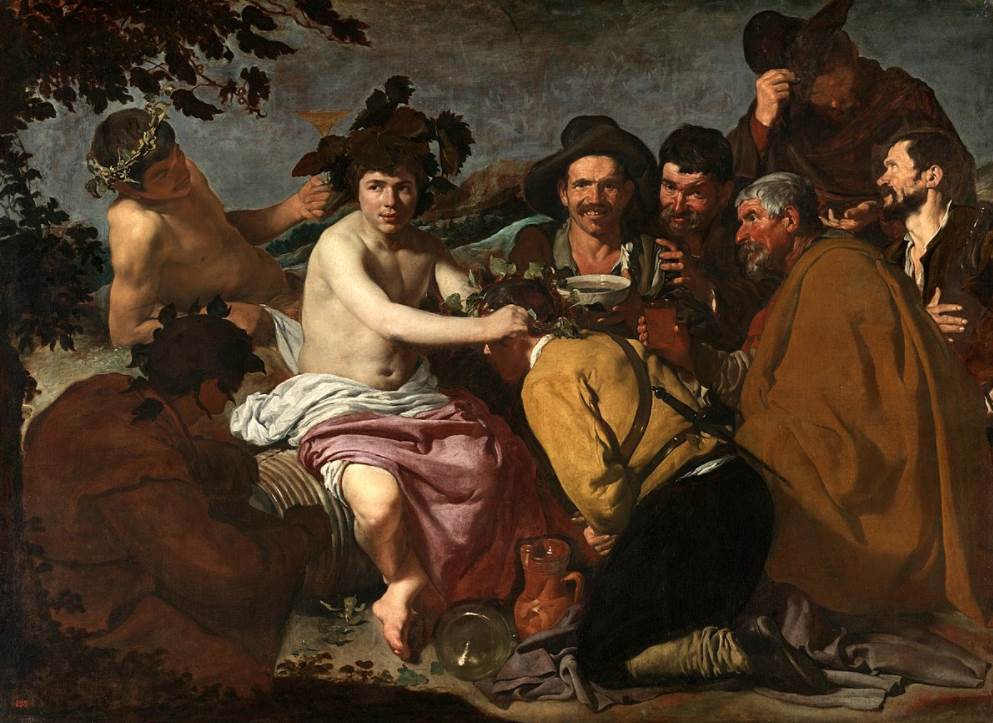
8. Venus and Adonis – Titian
- Date created: 1554
- Dimensions: 186 x 207 centimeters (73.2 x 81.4 inches)
Venus and Adonis is the name of about 30 paintings depicting the same subject of which at least several are by the hand of Titian himself. The original version is believed to have been painted by the artist in the late 1520s but this one has been lost.
The painting in the Prado Museum in Madrid depicting the popular mythological story is now believed to be the original surviving work, although it was produced over 2 decades later. It was one of the paintings commissioned by King Phillip II of Spain, a series referred to as the “Poesie.”
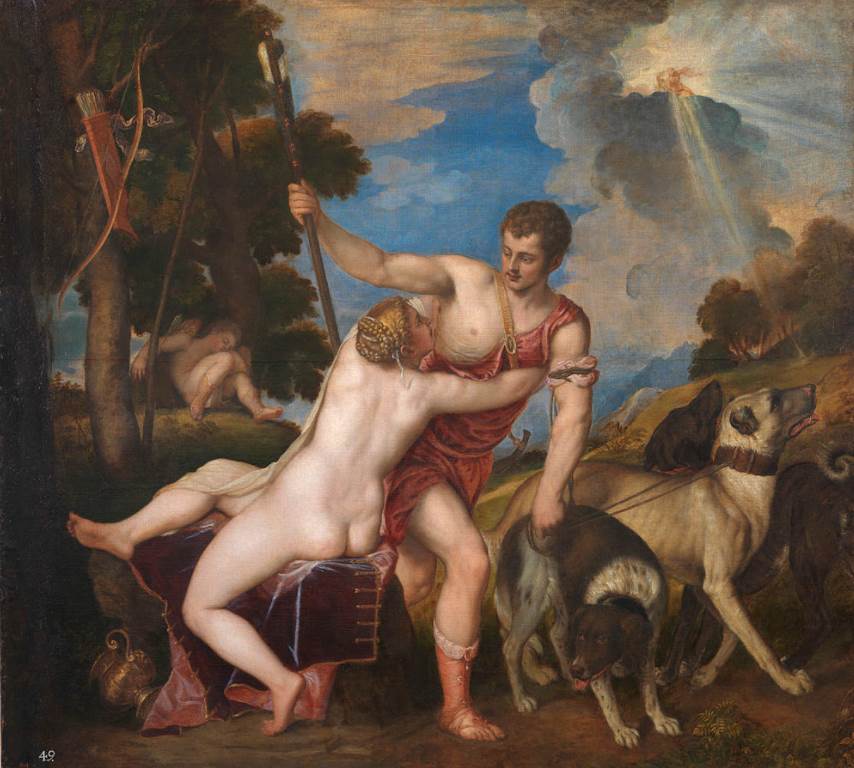
9. The Adoration of the Magi – Peter Paul Rubens
- Date created: 1609-1629
- Dimensions: 355.5 x 493 centimeters (11.6 x 16.1 feet)
The Adoration of the Magi is another monumental painting by Peter Paul Rubens which he started in 1609 but which he didn’t complete until his second trip to Spain between 1628 and 1629. He already produced two other versions of the same subject by then, one in 1616–17 and the other in 1624.
The painting has a remarkable backstory because it was originally painted in Rubens’ home city of Antwerp. It was presented to a man named Rodrigo Calderón (1576-1621) in 1612 to seal a peace deal but he ended up being executed nearly a decade later. Rubens himself tried to negotiate a peace deal in Spain in the late 1620s and reworked this magnificent painting during this trip.

10. The Third of May 1808 – Francisco Goya
- Date created: 1814
- Dimensions: 268 × 347 centimeters (106 × 137 inches)
The Third of May 1808 is considered to be one of the most revolutionary paintings ever created. It’s one of the first paintings in history that depicts the raw horrors of war as they are instead of the idealized versions that were known up until this point.
The painting was commissioned by the Spanish government at the time to commemorate the Spanish resistance during the Napoleonic Wars in the early 19th century. There’s an accompanying painting at the Prado Museum called “The Second of May 1808.”



